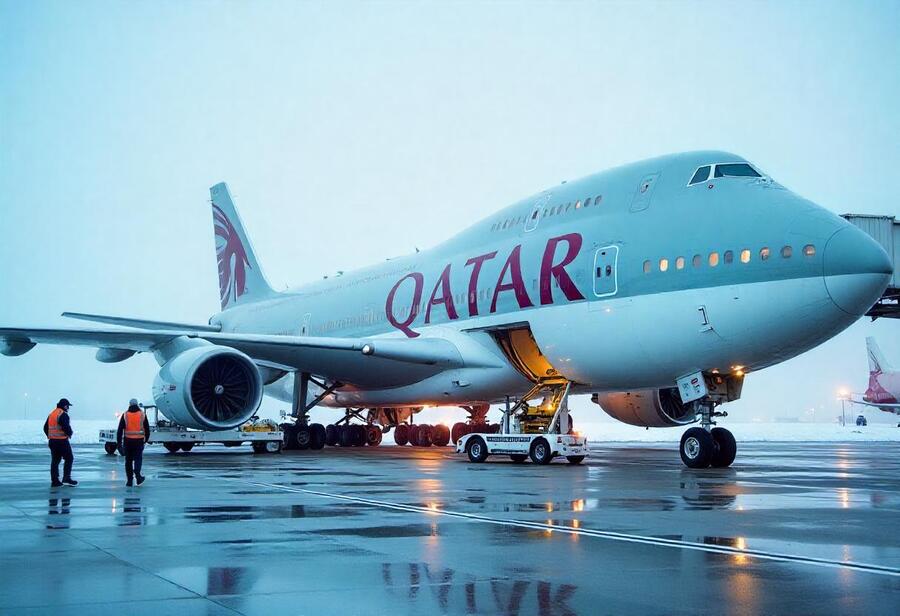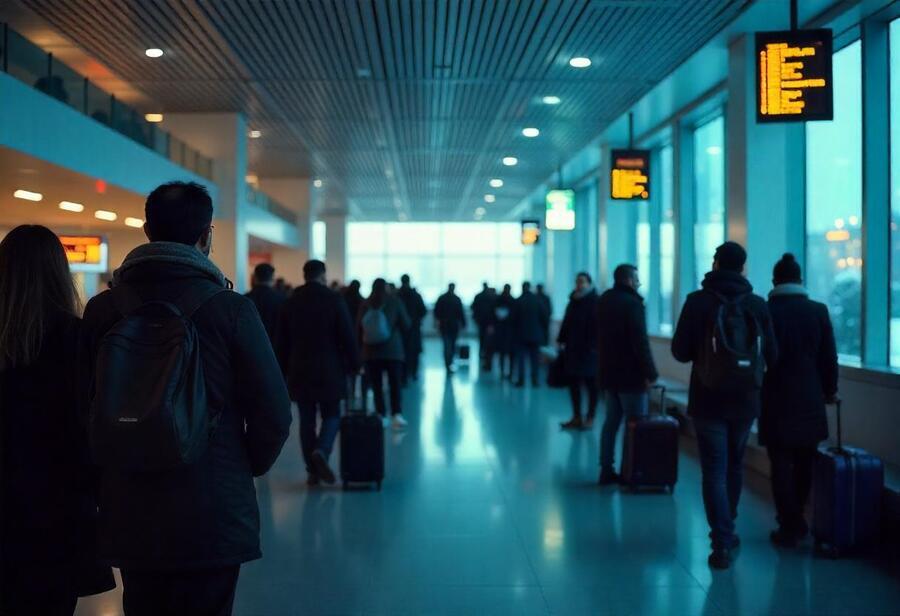Terrifying Engine Fire Forces KLM flight KL877 Boeing 777-300ER from Amsterdam to Mumbai to Circle Back Mid-Air Over Schiphol Airport, Travel Chaos, The Truth Behind the Story - Travel And Tour World
Saturday, May 17, 2025

A terrifying engine fire on KLM flight KL877 sent shockwaves through Schiphol and beyond today. The Boeing 777-300ER en route from Amsterdam to Mumbai was forced to circle back mid-air over Schiphol Airport after what appeared to be a severe malfunction in the left engine. The aircraft, identified as KL877, had barely lifted off when flames erupted—causing panic in the cabin and triggering emergency protocols. Within minutes, the Boeing 777-300ER abandoned its course and began circling back, igniting fear and travel chaos across multiple time zones.
This wasn’t just any technical glitch. It was a terrifying engine fire that turned a routine transcontinental journey into a chilling ordeal. KLM flight KL877, which had departed from Amsterdam with Mumbai as its destination, faced critical in-flight trouble that brought the plane back over Schiphol Airport, where crews prepared for a potential emergency landing.
Travel chaos unraveled fast. Flights were delayed, passengers were rerouted, and schedules collapsed. The grounded Boeing 777-300ER became the center of global attention as thousands of travelers scrambled for updates. Meanwhile, questions rose about what really caused the incident. Was it a compressor stall? A bird strike? Or something more complex?
The truth behind the story may take time to emerge, but one thing is clear—today’s scare involving KLM flight KL877, a Boeing 777-300ER, and the skies over Schiphol Airport has left the aviation world shaken. The travel chaos it triggered is only the beginning of what could be a wider investigation.
In a dramatic turn of events today, KLM flight KL877—a scheduled long-haul journey from Amsterdam to Mumbai—was forced to abandon its route just minutes after takeoff following a serious engine malfunction. The Boeing 777-300ER, bearing registration PH-BVW, had departed Amsterdam Schiphol Airport at 12:03 CEST when it experienced what appeared to be a left engine fire, forcing pilots to level off at just 6,000 feet.
The aircraft began circling over the North Sea, engaging in fuel dumping procedures—an essential step to safely reduce landing weight before making an emergency return. As of this report, KL877 is expected to land safely back at Schiphol, but the incident is already echoing across global aviation networks.
What began as a routine intercontinental journey quickly turned into a high-stakes emergency. Observers on the ground and flight tracking data confirm that KL877 did not climb beyond 6,000 feet before circling repeatedly near the Dutch coastline.
A plume of flames was reportedly seen trailing from the left engine—a rare but alarming event that can stem from two primary causes: or a bird strike. A compressor stall involves a sudden disruption in airflow through the engine, creating violent pressure surges. In contrast, a bird strike—especially involving large birds—can damage internal fan blades, triggering fires, smoke, and loud bangs.
Either scenario places immense stress on engine performance and flight safety, prompting the crew to initiate a controlled return.
The ripple effect from KL877’s emergency is already being felt across the aviation and tourism sectors. The flight, initially expected to land in Mumbai after an 8-hour 45-minute journey, now leaves passengers stranded in Amsterdam. Many had connecting travel plans across South Asia, impacting both leisure and business travel.
Moreover, this disruption comes at a time when transcontinental routes between Europe and India are surging in demand due to seasonal tourism spikes and corporate travel recovery. According to recent aviation data, passenger volumes on Amsterdam–Mumbai flights have risen by 28% year-over-year.
Now, with KL877 grounded and its aircraft undergoing safety inspections, KLM faces immediate logistical hurdles. Flight rescheduling, aircraft reassignment, and compensation protocols must be rapidly deployed to mitigate customer dissatisfaction and avoid cascading cancellations.
For passengers onboard, the experience was nothing short of traumatic. The roar of engine trouble, coupled with the sensation of an abrupt altitude stop and endless circling, evokes powerful emotional stress. Families, tourists, and business travelers alike are left shaken—both by the incident and the uncertainty it has injected into their travel timelines.
Though no injuries have been reported so far, the psychological impact will likely linger. Passengers returning to Schiphol must now navigate rebooking chaos, hotel accommodations, and visa or business-related complications.
The incident underscores growing concerns around aircraft maintenance cycles and environmental hazards, especially bird populations near major airports. Schiphol Airport, in particular, has had a checkered history with bird strike incidents due to its proximity to agricultural lands and wetlands.
Aviation analysts note that while modern aircraft like the Boeing 777 are engineered to withstand a single engine failure, any fire event elevates operational risk dramatically. Today’s emergency shines a spotlight on the need for heightened wildlife management and real-time diagnostic systems.
KLM and Dutch aviation authorities are expected to conduct a comprehensive investigation to determine the precise cause of the fire. Preliminary evidence will likely include engine performance data, pilot recordings, and radar logs.
India’s inbound travel agencies are already reacting to the disruption. With travel corridors reopening and Indian tourism staging a vibrant comeback, incidents like these create unwelcome turbulence. The India Tourism Development Corporation (ITDC) has flagged concerns about possible passenger hesitancy if incidents persist on long-haul routes.
Meanwhile, KLM’s crisis response strategy will be closely watched by industry peers. How quickly the airline manages rebookings, communicates with travelers, and ensures fleet readiness will define its customer retention metrics in the coming weeks.
This is not merely an operational hiccup. In an age where consumer sentiment is shaped online in real-time, travel brands cannot afford even momentary lapses in perceived safety or responsiveness.
The Boeing 777 remains a backbone of long-haul global aviation, used widely by leading carriers. Any recurring technical issues—whether mechanical or environmental—could force reassessments in maintenance timelines, pilot training, and even airport risk protocols.
Fuel dumping over the North Sea, though necessary, also raises environmental questions. Such operations are permitted under strict guidelines, but repeated events could invite scrutiny from environmental authorities.
As KL877 returns to the gate, what happens next will ripple far beyond Schiphol’s runways. The airline must swiftly issue updates, transparently outline cause investigations, and reassure both stakeholders and passengers that safety remains paramount.
This incident also underscores the unpredictable nature of aviation. Despite advanced engineering and protocols, real-world conditions can upend even the most meticulously planned flight.









